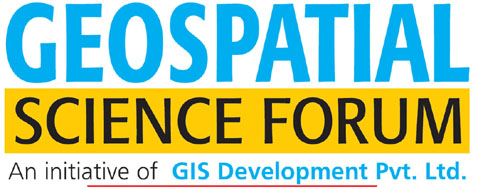
Mike Worboys is recognized for the great impact of his pioneering work on object-oriented modeling for geographic information systems (GIS), as exemplified by three seminal papers published in 1990 and 1994. In the early 1990s Mike was among the first to show convincingly how the conceptual modeling mechanisms of generalization, aggregation, and association provided a higher-level abstraction for geographic information than the relational data model, which at the time was seen as the panacea of database design.
He lead-authored the classic paper on this, "Object-oriented data modelling for spatial databases" published in 1990 in the International Journal of Geographical Information Systems (IJGIS). This paper has been cited hundreds of times (including 120 citations in Google Scholar), and was also chosen for the compendium Classics from IJGIS, featuring the twenty most valuable contributions to GIS published over the first 20 years of that journal.
Mike went on to publish two important follow-ups to the initial 1990 IJGIS paper, including the first comprehensive treatment of object-oriented modeling for both spatial and temporal information. The two articles have been almost as influential as the 1990 piece, with his 1994 article in IJGIS ("Object-oriented approaches to geo-referenced information") accumulating at least as many citations, and a 1994 article in The Computer Journal ("A unified model of spatial and temporal information"), ranking to date as one of the most heavily-cited papers ever to be published in that outlet. Mike is among the very few researchers to have made a reciprocal impact in multiple disciplines, in this case by bringing computer science concepts to the GIS community, while also demonstrating to computer scientists the power of spatial and temporal
modeling.
Toward this end, Mike is also the author of the seminal text, Geographic Information systems: A Computing Perspective, now in its second edition. When this book first appeared in 1995, it made a great impact on students and professionals alike from a variety of disciplines. As one exemplar, a graduate student wrote: "This book covers GIS data structures and databases in a way that a computer scientist would appreciate. It covers GIS algorithms in a way that an applied mathematician would like. It covers GIS topology in a way that a pure mathematician could learn from. It covers uncertainty in a way that a statistician would enjoy." And to this many would add that it provides the kind of introduction to GIS that geographers very much need.
Trained as a mathematician with a Ph.D. in that discipline from the University of Birmingham, England, Mike has previously won the Dean's Award of Excellence from the University of Maine, School of Engineering, and the designation of Distinguished Scientist from the Association of Computing Machinery (ACM). He is founding chair of the steering committee for the annual national conference GISRUK, and serves on the editorial boards of the IJGIS, Transactions in GIS, Geoinformatica, and the Journal of Computers in Enviromental and Urban Systems.
Mike is a member of the scientific committees of several international GIS and database conferences, and convenor of the UK Research Working Group (WG3) of the National Geospatial Data Framework. In addition to serving as chair of the Department of Spatial Information Science and Engineering at the University of Maine, he is also an adjunct professor in their Department of Mathematics there, as well as a research scientist of the National Center for Geographic Information and Analysis (NCGIA) and an honorary professorial fellow of the Department of Geomatics at the University of Melbourne, Australia.
Mike Worboys is truly deserving of the 2008 UCGIS Research Award and was able to receive this honor in person at the
2008 UCGIS Summer Assembly on the campus of the University of Minnesota, June 24, 2008. Many thanks to the 2008 award sub-committee which consisted ofDrs. Ron Eastman (Geography, Clarke U. and 2007 recipient) as chair, Mei-Po Kwan (Geography, Ohio State and 2005 recipient), and Shashi Shekar (Computer Science, U. of Minnesota).
The award committee was organized by UCGIS Research Chair Dawn Wright of Oregon State University.
Credits: UCGIS







